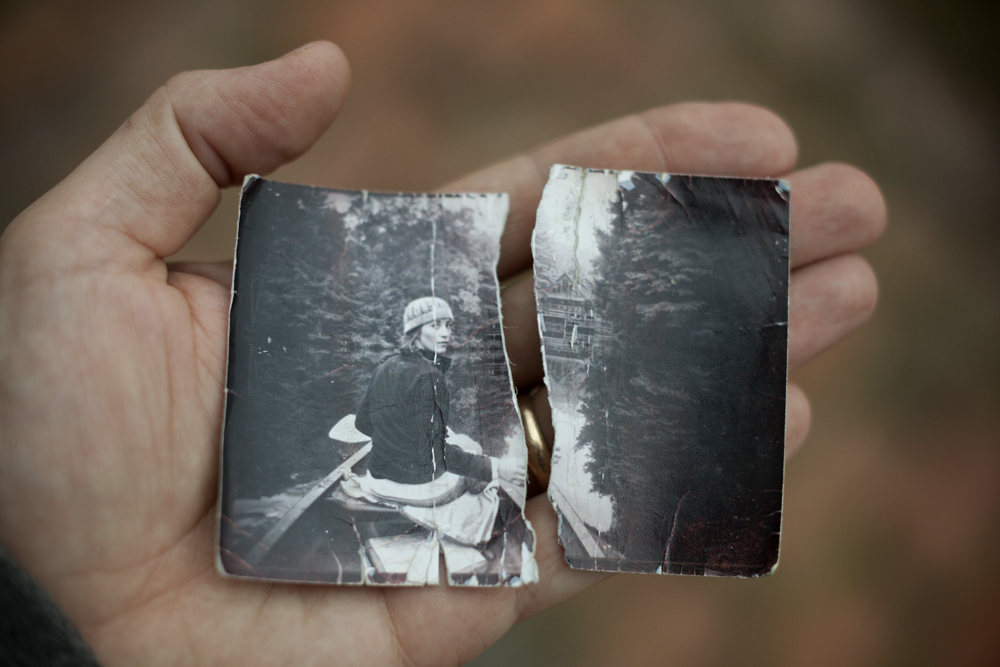The first printed photograph I took of Claire.
With more than 80 million user blogs, Tumblr has become one of the top 10 most trafficked web sites on the planet. [Source]
This news signals part of a sea change in our relationship with the photographic image. For many, Tumblr is as a hosting service for images. 42% of original posts on the platform are reported to be images. [Source].
Tumblr is superb at making it easy to upload images to an individual’s Tumblr page, and even easier to replicate, move, share, take, and borrow images once they are hosted by Tumblr. So much so, that the boundaries between individual Tumblr accounts and the photos that “belong” to each account is so thin, that once an image is introduced into the domain of Tumblr, it is easier to think of images not by who originated them (original work or not), but rather who chooses to “reblog” them – display a copy of an image as a declaration of their own tastes.
As Tumblr grows, two types of Tumblr accounts emerge. There are those who post original images, and those who post – and re-blog images they did not create. And of course, many people do a little of each. I am not very interested in Tumblr beyond this. But I am very interested in photography, and it’s purpose in my life. And Tumblr – many online photo sharing platforms – are changing it.
So when I speak of photography I mean it personally. Photography is to me, above all else, biography. It is a record of where I was present, an active pursuit of understanding the world as I encountered it. Photography is observation, arrangement, and synthesis. Photography is paying reverence, and understanding. The images are a receipt of perhaps the only thing money cannot buy – Time – my time, my biography. Photographs are a declaration of what I value, what I worked to make sense of and to know, and what I love. Photographs are promises and guarantees to never forget and never loose appreciation for the people and places and time that is dear.
Viewing images on Tumblr (and on the internet in many places) leaves me confused, uncomfortable, and disenchanted. When I see the fashionable images that stream across my Tumblr page, with no context, I feel as if I am trying to have a conversation with mannequins. I don’t know who is in the image. I do not know where the image was taken. I don’t know when, why, or by whom the photograph was forged. Hundreds, thousands, millions of images are being consumed this way. Cool and pretty images are no longer a scarcity. What is scarce – and therefore the new demand for me – is meaning. I sense that we are intrinsically changing the purpose of photography. I am interested in where our food comes from, the clothes I wear, and the material I consume. They all have stories that determine my consumption and understanding – photographs are no different. We are determining that the highest value we place on a photo is what it looks like, how cool the objects are in the frame, and how pretty the people are in it. When we know nothing else about the image, what other criteria can be judge by? This may seem paradoxical to suggest a photograph is anything more than what it looks like. But with only this measure, we leave the dearest part of any image worth knowing behind.
Tumblr suggests to me we can first find photographs, and then live at least by some small part, by them. Photographs become clip art for the stories we tell ourselves. We have found a way not to have to take our “own” images, and instead take from the “free” and promiscuous pool of images we find, re-blog them to our curated on-line selves, and write-to-fit our identities to them.
There are hundreds, thousands, millions of beautiful images to see. They can be inspirational, instructional, and worth seeing. Many Tumblr users see this platform as a new artistic medium. It can be a place where a talent for style, if not expressions originality, can be displayed. Most Tumblr users are earnest, but I sense the growing shift from the spirit of sharing to identity building through appropriation. We may not always feel like we are able to make ‘cool’ images. But we can all take meaningful and original images. We all can make our own biography. Tumblr allows for all, and it’s users have earnest intentions. But to my photographic constitution, – to my sense of self – they are not all harmless.
I enjoy other people’s photography. I value it for the reasons’ a value my own. It is a declaration of the subject matter that cannot be expressed with words, or in any other way. It is a testament to the photographer and their understanding of their time and space. I value photography because I can learn from it. I cherish good photographers like I do good writers. They show me meanings and moments in this world I couldn’t grasp any other way. It is difficult to adjust to this change. And with time, it will change me, and the images I will make and keep.
